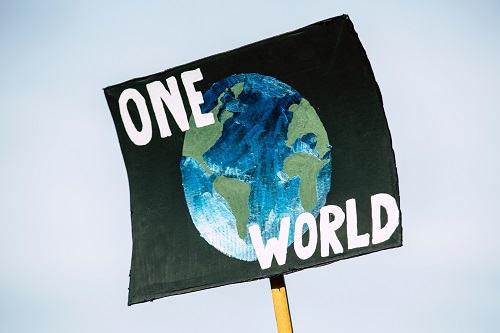World Health Day – April 7, 2022
Initiated by the World Health Organization and celebrated by all, each April 7 is recognized worldwide as world health day!
This April 7 is no different. Each year, on this day, the World Health Organization (WHO) focuses on an issue of particular concern for wellness and medicine.
The programs, measures, and health campaigns are planned around this goal in the proceeding year. For example, this year’s World Health Day will highlight climate changes, pollution, and its effect on human health. The goal of this year’s world health day is “Our Planet, Our Health.”
As World Health Day is being celebrated in 2 days’ time, it is an excellent opportunity to take stock of how we are doing globally in the health sector.
The climate crisis is a health crisis

According to WHO, the climate crisis is the single biggest health threat facing humanity. There is no denying that right now.
The evidence is clear: The climate crisis affects our health in multiple ways. For example, the rapid rates of increase in asthma and allergies and the sudden increase in autoimmune diseases and cancers, along with the worldwide pandemic of metabolic and cardiovascular diseases, are all connected in some ways with the changing climate and our polluted planet.
Although there are numerous health issues present in the world right now, the lack of hygiene and sterilizations, for example, as the pandemic has shown us, the single most devastating and potential to kill millions in one fell swoop is climate change.
The world health organization estimated that around 13 billion people die each year due to environmental conditions. The worst of environmental pollution with the highest death rates are:
Air pollution

According to WHO, air pollution is killing at least seven million people every year. To understand its gravity, that’s one in eight deaths worldwide. In addition, most people who live in cities develop a high risk of stroke, heart disease, lung cancer, and chronic respiratory diseases as a result of continuous inhalation of harsh chemical particles.
Only one out of every ten people worldwide live within an acceptable rate of air pollution. The others? They are constantly breathing in poisonous chemicals.
Air pollution has become so severe in some regions that schools, offices, and daily life have to be halted. In terms of medical device manufacturing, the situation presents a bigger challenge than perhaps we were ready to take on.
Especially with the rising need for ventilatory assistance devices and personal and respiratory protective equipment, there is both a need for innovation and mass production. On world health day 2022, the theme is to raise awareness and
Water pollution
The sea, the largest water reservoir on the earth, has become a dumping ground for plastic and industrial waste. The medical industry is undoubtedly a massive part of this waste production and irresponsible waste management. The effect of the pollution of this margin on public health is also what the medical industry needs to deal with.
The presence of microplastic in human bodies, contamination of community water with water-borne communicable diseases, and chemicals like arsenic, heavy metals, and radioactivity in water are all hazardous to public health.
Medical device manufacturers may not have the resources to battle all global health threats; however, they can be a part of the evergoing movement to create societies focused on protecting health. For example, devices for decontamination of water and newer treatment adjuncts for diarrhoea, cholera, and schistosomiasis could save millions of lives.
Sterilization and the availability of sanitation are other concerns that medical manufacturers can address with the help of community organizations; it’s very much possible to provide proper sanitation for all.
Medical manufacture and our carbon footprint
While medical manufacturers, along with doctors, nurses, and hospitals, are on the front line of battling the health effects of climate change, unfortunately, we are also partly responsible. According to a paper published in Lancet, the negative impact of healthcare industries on the global environment ranges between 1% and 5%. The percentage may seem low to some, but it is imperative that we recognize the nearly double increase of global expenditures in the health sector and about a 29% increase in greenhouse gas emissions between the year 2000 to 2015.
Studies admit most carbon emissions are due to clinical necessities like usage of electricity and water, patient transport, heating, etc. Even so, the carbon footprint of medical manufacturing industries is not something to scoff at.
From the Department of Public Health and Primary Care of Cambridge, Alexander J K Wilkinson portrayed the effect clearly in his paper published in 2019. The article points out how changing a few factors regarding the production of inhalers, occupying a relatively smaller portion of the complete pharmaceutical production, can reduce the emission of 58 kt of CO2e in England alone.
Medical devices using similar gaseous products, HFA134a MDIs, can be benefitted by using the alternative HFA134a MDIs, which are both cost-effective and efficient.
Remanufacturing of medical devices is a not so recent but currently heavu=ily endorsed idea that has the potential to cut costs and carbon emissions. Last year, the EU decided to go towards greener healthcare by promoting a circular economy.
Remanufacturing is the process of disassembling a device, checking for any parts that may have been damaged in use or transport, replacing those parts with new ones, and then selling the device by re-sterilizing it and adding it back into the supply chain. As most medical devices are used once, except for the larger machines, this step is expected to reduce the need for new product production by more than half.
While the research on remanufacturing is still in its infancy, many show promising results. One study, in particular, made a huge impact. The study discusses the reuse of Electrophysiology Catheters. Electrophysiology Catheters are complex devices that have very little value in traditional recycling. Their internal mechanism is delicate enough that producing “new” catheters are time-consuming and costly. When remanufactured, these devices work with the same efficacy as virgin ones. So, the end products are fundamentally the same, yet the cost is reduced exponentially. According to the study, using remanufactured electrophysiology catheters lowers the global warming impact by 50.4%, with a reduction in the use of resources by 28.8%.
Medical device remanufacturing currently makes up only a few per cent of the overall market—but it’s growing. The process can be used on almost any type of medical device: MRI machines, imaging equipment, endoscopes… even wheelchairs. It’s an environmentally sound practice because it avoids the need to manufacture entirely new devices. But more than that, it’s a cost-saving measure for both hospitals and patients—and a business opportunity for manufacturing companies who want to get in on the action.
The MDR is also becoming remanufacturing friendly and is expected to clear the legal path towards cleaner and circular device production strategies. In conclusion, almost everyone agrees that remanufacturing can be a viable alternative to disposable devices, not only because it reduces emissions but also because it cuts down on waste going into landfills and it reduces costs for hospitals. Moreover, effective and safe sterilization methods have existed for decades, taking care of the sole reasons why single-use devices were introduced in the first place.
The World Health Organization and International Health Security

There has been much concern among the international community regarding the consequences of climate change. WHO, in an attempt to reduce global health issues, had responded regarding this matter accordingly. In order to achieve a stable and ideal state of well being across the world, the World Health Organization had established the International Health Regulations (IHR) in 2005. These regulations hold governments and countries legally responsible for reporting and handling public health events.
In 2016, the World Health Organization resolution set The role of the health sector in the Strategic Approach to International Chemicals Management towards the 2020 goal and beyond as prevention of chemical health injuries.
WHO’s Interagency Standing Committee (IASC) is also a dedicated department to the management of health security matters.
The goal of World Health Day, 2022 is to raise awareness on the pressing matters regarding our climate, and global health with the resolution to “keep humans and the planet healthy” and “keep humans and the planet healthy.”
Sources:
- World Health Day 2022 (who.int)
- Air pollution (who.int)
- Lenzen, M., Malik, A., Li, M., Fry, J., Weisz, H., Pichler, P. P., … & Pencheon, D. (2020). The environmental footprint of health care: a global assessment. The Lancet Planetary Health, 4(7), e271-e279. DOI:https://doi.org/10.1016/S2542-5196(20)30121-2
- Wilkinson, A. J., Braggins, R., Steinbach, I., & Smith, J. (2019). Costs of switching to low global warming potential inhalers. An economic and carbon footprint analysis of NHS prescription data in England. BMJ open, 9(10), e028763.
- Schulte, A., Maga, D., & Thonemann, N. (2021). Combining life cycle assessment and circularity assessment to analyze environmental impacts of the medical remanufacturing of electrophysiology catheters. Sustainability, 13(2), 898.
